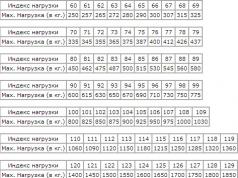There is a huge number of tires on the Russian market. A considerable part of them are intended for winter operation. There are more budgetary and more expensive models. However, when choosing, it is worth paying attention not only to the price, but also to the characteristics, since in winter the operating conditions are the most difficult. Continental has these tires called IceContact 2.
They are ideal for the harsh Russian winters. Their peculiarity is that the properties are preserved even in severe frost, and ideal grip is ensured by the spikes in the tread pattern. Let's consider this model in more detail.
Where do they produce
Continental Ice Contact 2 are manufactured in Russia, in the city of Kaluga. Their production began here in March 2015, so the tires can be considered a novelty on the market. All production technology here is the same as in Germany at the main plant.
The quality of the products is monitored by experienced German specialists, which is why defective tires will never come across to the buyer. Tires are manufactured not only for the Russian domestic market. They are also sent to Scandinavia and the Baltics, where the climate in winter is similar to the Russian one.
Some information about tires
Continental IceContact 2 tires are designed for passenger cars for winter use. They are presented in the second generation. Compared to the first version, they received improved performance.
According to the statistics, the handling on dry pavement has improved by as much as 9 percent. On the ice, the handling increased by only 2 percent, but this is noticeable.
Rubber compound
The rubber composition of this model has been drastically changed to improve its properties. Now it includes elements containing silicon and special polymers. Thanks to this, the tires are able to withstand severe frosts, and also retain important properties in such conditions.
Also, due to this, the resource of tires has increased, which contributes to savings, because one set will be enough for a longer period.
Tread pattern
The tread pattern of the tires is asymmetrical. It is divided into several parts for greater efficiency.
The outer part provides excellent grip and handling, while the center part is responsible for accelerating and decelerating the vehicle. Thus, the tires provide the shortest stopping distance.
Thorns
The number of thorns is limited here. This was done due to strict restrictions that were recently introduced in Europe. According to them, the number of spikes on the tread must be respected, and their shape is not too sharp.
This was done in order to reduce the impact of the studs on the asphalt. Studies have shown that due to the special shape of the studs, the adhesion properties did not deteriorate, but the destructive effect on the road surface decreased.
How to fit IceContact 2 tires correctly
After purchasing tires, they also need to be installed correctly. This process is not known to everyone, so it will be described in more detail here.
It is unlikely that you will be able to connect the tires and the disc on your own, since this requires special equipment. However, you can install a finished wheel. This is not difficult.
It is necessary to inspect the side of the tires in more detail. It should be marked Outside or similar, which means the outer part of the tires.
Inside there is an inscription Inside. When installing, you need to be guided by them, and then everything will be done correctly. The tread will be positioned correctly and the tires will reach their full potential.
Outcome
Continental Ice Contact 2 tires are a good option for vehicles that operate most on snow and ice. It is in these conditions that they are able to ensure safe driving.
The Continental ContiIceContact 2 is a premium winter studded tire with an asymmetric tread pattern for passenger cars.
Country of origin: Germany, Russia.
Continental Ice Contact 2 test by Swedish Auto Motor & Sport conducted in 2015
In 2015, experts from the Swedish edition of Auto Motor & Sport tested the Continental Ice Contact 2 winter tire in the size 205/55 R16 and compared it with fifteen budget, medium and premium tires. For clarity of the results, both similar spike tires and friction tires of the Nordic type took part in the test.










Test results
In the test, the Continental IceContact 2 ranked second overall among studded tires. Overall, the tire performed well in a balanced and safe manner across all disciplines, with no obvious deficiencies. It showed itself best of all in braking on ice and became the leader in the test, and worse - on wet asphalt, where, in comparison with similar studs, it showed a relatively long braking distance.
| Discipline | A place | A comment | |
|---|---|---|---|
| Braking on wet asphalt | 8 | a) with the best studded tire (test leader) - 2.5 meters longer; b) with the best friction tire - 1.17 meters longer. |
|
| Handling on wet asphalt | 4 | a) with the best studded tire (test leader) - 1.38 sec longer; b) with a better friction tire - less by 0.02 sec. |
|
| Dry braking | 12 | Difference in stopping distance: a) with the best friction tire (leader of the test) - 2.99 meters longer; b) with the best studded tire - 1.76 meters longer. |
|
| Braking on ice | 1 | Best result. Difference in stopping distance: a) with the best studded tire - shorter by 0.03 meters; b) with the best friction tire - shorter by 1.09 meters. |
|
| Lateral stability on ice | 7-9 | Lap time difference: a) with the best studded tire - the same result; b) with the best friction tire (test leader) - 0.3 min longer. |
|
| Acceleration on ice | 4 | Difference in acceleration time to 25 km / h: a) with the best studded tire (test leader) - 0.84 sec faster; b) with a better friction tire - faster by 0.72 sec. |
|
| Snow braking | 6 | Difference in stopping distance: a) with the best studded tire (test leader) - 0.38 meters longer; b) with the best friction tire - longer by 0.02 meters. |
|
| Acceleration in the snow | 5 | Difference in acceleration time to 30 km / h: a) with the best studded tire (test leader) - 0.19 sec longer; b) with a better friction tire - faster by 0.07 sec. |
|
| Lateral stability in snow | 2 | Lap time difference: a) with the best studded tire (test leader) - 0.18 sec longer; b) with a better friction tire - 1.58 sec faster. |
|
 | Profitability | 11-12 | Fuel consumption difference: a) with the best studded tire - more by 0.1 l / 10 km; b) with a better friction tire - 0.6 l / 10 km more |
Review of the experts who conducted the test:
The tire has shown reliable and predictable behavior on ice and snow. Lost valuable points due to poor performance on dry surfaces.
Lending terms:
- Loan term: 2–36 months
- Credit limit: from 10,000 rubles. up to 300,000 rubles
- Interest rate - determined by the bank based on your data and credit history
How to place an order on credit?
To place an order on credit, just follow a few simple steps:- Decide on the product and place an order on the website or through a call center operator
- After placing the order, the bank manager will contact you, advise on the terms of the loan and agree with you on a meeting to sign the contract
- Meet at a convenient time for you with a bank representative and sign the agreement
- After signing the contract, you need to wait for the bank to pay us your order. Money transfer takes 2 to 3 business days. As soon as the money is received from the bank, we will send you an SMS with an offer to pick up the order
- Come to our center with a passport and a loan agreement to receive an order
Loan conditions
- Russian citizenship with permanent registration
- Age from 18 years
- Purchase amount from 10,000 to 300,000 rubles
- Required documents: passport of the Russian Federation, SNILS
But he did not know that tires are not only physics, but also chemistry, with all the ensuing consequences (this, incidentally, also applies to the fact of tire aging). The chemical constituent of this product was discussed at the Continental technical seminar.
TASK
The most northern location for the seminar was chosen - a training ground near the Finnish town of Levi. And the main topic of the seminar was the principle of creating an optimal winter tire from the point of view of chemistry. It is the optimal (as you know, ideal tires do not exist), focused on a particular region of use. And above all, taking into account the temperature regimes in that very region. And to begin with, everyone was invited to hit with a hammer on two samples of rubber that had just been removed from the refrigerating chamber. The first sample passed the test without a hint of permanent deformation, and the second, like glass, shattered to smithereens. The thing is that in the first sample, a rubber compound was used, "designed" to a temperature of –60 ° C, and the temperature threshold of the mixture of the second sample did not exceed –20 ° C. By the way, this is a good example of why, when the corresponding season and at a stable temperature below + 7 ° C, it is already worth changing summer tires to winter ones.
These are the components of success: the components involved in creating a tire
It is the rubber compound that is the most important variable, which determines approximately 50% of the changes in tire quality. In total, Continental's developers use 15 chemical components, created using about 1,500 different materials, the various combinations of which determine the characteristics of the tires. And the general technical task for the creators of the rubber compound is formulated quite simply - to ensure the maximum possible adhesion of the tire to the road under specific weather and temperature conditions.
SOLUTION
And then, proceeding from the same technical specifications, the assembly of such a chemical puzzle begins. Does the compound provide elasticity and, consequently, good adhesion properties? Wouldn't the wear resistance of the tire be affected? Trying to provide increased mileage? But to what extent will a tire, the tread of which is prone to "tanning", lose its grip? Carbon black has been used as so-called “fillers” in the tire industry for a long time, and 20 years ago engineers began to use silicon dioxide (silica) - they seriously affect both the grip characteristics of a tire on wet surfaces and its durability. And the optimal balance of these fillers in the chemical composition of the rubber compound of the tread can provide the desired characteristics. The polymers in the rubber compound provide the rubber with the necessary elasticity, and the oils (Continental products also use rapeseed oil) make the rubber softer. As with other ingredients, the amount of oil in a rubber compound can seriously change the characteristics of a product. And already at the stage of vulcanization, the ratio of substances such as zinc oxide and sulfur has a significant effect on the characteristics.

Continental IceContact 2 studs withstand 500 N breakout force
In the course of the seminar, its participants were asked to create an optimal compound for certain conditions from the "components", collecting the same chemical puzzle. As for a practical illustration of these chemical calculations, the following figures can be cited: if the braking distance of winter tires on snow at a speed of 50 km / h is 31 meters, then the braking distance of tires with the same compound, but with a summer tread pattern will already be 42 meters. And just summer tires will go 62 meters. Feel the difference, as they say.
PRODUCT
New products from Continental were also presented at the technical seminar. For example, the studded model IceContact 2. As for the main topic of the seminar, the recipe for the tread compound in this tire was focused on lower temperatures. As in its predecessor, the ContiIce Contact tire, it has an asymmetric tread pattern, but the main feature lies in the spikes. First, there are significantly more of them - 190 instead of 130! But what about the legislation regulating the installation of no more than 50 studs per running meter, you ask. In this case, the Continental developers did the same as their colleagues from Nokian Tires, who proved by special tests that an increase in the number of studs in their product does not have a greater destructive effect on the road surface than tires with a permitted number of studs. The stud of the IceContact 2 tire itself has become smaller and lighter by almost 25%, and a new technology has been used to attach it to the tire tread. The spike is installed in the tire together with a small amount of a special compound, which, during vulcanization, reliably fixes the spike.

This is how Continental winter tire studs evolved
According to the developers, such an innovation improved the tenon anchorage by 400%. The first impressions of the new tires at the test site are very positive. Firstly, very good braking performance on ice. Secondly, when maneuvering on ice and packed snow, the behavior of the tires is quite understandable, without surprises, they have a clear reaction to steering. As for the comfort, including the sound one, it was not possible to check them on the asphalt. But the developers themselves said that they did not forget about this parameter either.
Continental Ice Contact 2 studded tires are the second generation of high-performance tires adapted for Russian winters. The latest developments of German engineers are embodied in an updated rubber compound formulation, increased safety and additional comfort. Redesigned metal studs, improved tip placement and asymmetrical tread pattern improve handling. Tire Continental Conti Ice Contact 2 copes with snow-covered tracks and regular trips on cleared city roads.
The advantages of Continental Ice Contact 2 winter tires include:
- the use of multifaceted cores of Kristall studs;
- Studding technology uses the tips in a complex manner;
- workable shoulder and middle protector segments;
- rapeseed oil, silica and polymers soften the tire.
When used in subzero temperatures, the XL reinforced Continental Ice Contact 2 tires retain their original elasticity and softness. In some sizes, the number of lightweight cleats has doubled. Because of this, grip performance and handling on slippery surfaces have increased. The tip loss of Continental Conti Ice Contact winter studded tires is minimized due to the improved retention of the anchors in the compound.
Additional Factory Studding Features
Around each tip there are two ledges with pockets, with the help of which the ice crumbs and snow slurry are discharged. The emergency braking of the Continental Conti Ice Contact 2 winter tires with studs has become controlled, and the drift handling has increased. Reducing the mass of steel auto spikes has led to a decrease in noise and suppression of acoustic stimuli. Continental brand tires for winter are presented in the catalog of the "Wheels for Free" online store. On the website, it is possible to select a suitable standard size and modification online.
- 2% increase in ice control;
- 20-row carbide stud arrangement;
- braking and acceleration improved by 8%.
The store's in-house consultants will help you choose the right wheels. The client will be informed about the availability of the ordered items and the methods of payment. In order to buy cheap car tires, it is better to wait for promotional offers or off-season sales of residues.







